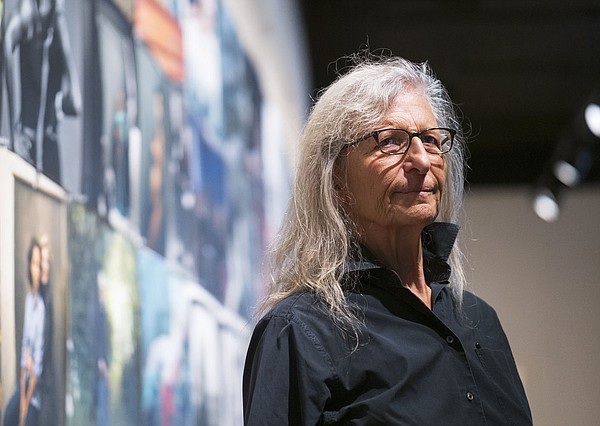[ad_1]
Annie Leibovitz’s work as a photographer is never done.
That’s why she and the curatorial team at Crystal Bridges Museum of American Art struggled to come up with the title of her exhibit there, she said.
“It’s never over; it’s just never ending,” Leibovitz said during a media preview Sept. 14.
“Annie Leibovitz At Work” is the artist’s first major museum exhibition in a decade. It opened to the public Sept. 16 and will continue through Jan. 29, 2024, then go on to museum stops in Charlotte, N.C.; Sacramento, Calif.; Nashville, Tenn.; and Wichita, Kan.
The work is displayed on homasote panels, a fiber wall board made of recycled paper, with push pins to hold up photographs that span the entirety of Leibovitz’ career, from those early years with Rolling Stone and her time at Vanity Fair and Vogue to her most recent commissions and lesser known works.
The paper and pushpin model resembles the way the well-known photographer hangs work in her studio, transporting viewers temporarily to her typical working space. There they will see familiar faces: Presidents Obama and Biden, LeBron James, Lizzo, Rhianna, Justice Ketanji Brown Jackson, Gov. Sarah Huckabee Sanders and many more.
In the final room of the exhibit are four high-tech digital display screens — 10 feet by 12 feet each — that feature 20 minute slideshows of Leibovitz’s work. Having that as an easy way to incorporate new work means Leibovitz is truly not finished, even as the exhibit receives its initial visitors.
“I plan to continue to shoot and add more to these screens as we go along,” she said.
Alejo Benedetti, acting curator of contemporary art at Crystal Bridges, said even if not every museumgoer immediately recognizes Leibovitz by name, they’re sure to recognize her photos.
“They’re emblazoned in our minds,” he said, such as the portrait of John Lennon naked, curled up next to Yoko Ono and kissing her cheek that was taken hours before his death. The iconic image of pregnant Demi Moore. The Rolling Stones on tour. “Her work is well known. It’s the highest compliment for an artist.”
Leibovitz initially arrived in Northwest Arkansas to take Alice Walton’s portrait, which she described as a “hoot,” saying Walton jumped off her boat into water when it was freezing cold and that she could hardly keep up with her.
At some point during the visit, Walton broached the idea of her having an exhibit at Crystal Bridges. The museum had none of Leibovitz’ work in its collection, and they would leave the prompt open to whatever she wanted to photograph.
Leibovitz told Walton: “I would love it if you would let me do some more work,” she recalls, telling her “there are people I’d like to photograph that I don’t always get the chance to.” Walton and the Crystal Bridges team agreed to help her with access, and so they were off on the exhibition project.
“One of the coolest things a museum can do is really trust an artist,” Benedetti said. “The product that you see in the end is Annie’s vision, no doubt about that. She has been deeply engaged in every aspect.”
As droves of schoolchildren pass by, Leibovitz seems charmed by the educational aspect of this museum. She says she wanted the show to be for young photographers or really anyone interested in photography.
“I set up the first two rooms as ‘aha!’ moments for me in my 54 years of work that taught me about photography along the way,” Leibovitz said. “I wanted a young person to see that, see what I went through, and explain that a little bit and then get to the last works.”
Annie Leibovitz started her artistic journey at the San Francisco Art Institute, where she initially studied painting but, she says, she was not very good at it. A night class in photography showed her a medium that was much more immediate, and it stuck.
Her earliest works were shot with a 35 mm small camera, which was new at the time, and the chosen style to emulate was photographer and documentarian Robert Frank’s.
“We were taught to look through the camera and use the camera as the frame,” Leibovitz said. The resulting photos of that time were rectangular, then square and finally a fatter square, the Haaselblad. Standing in the exhibition, she points to a photo of a beach scene as one influential to her early interest. She took it on a class outing, shot the image through a car window and, while it wasn’t by her estimation that good, “it made me think of the dynamics of photography and what it could do.”
Leibovitz’s practice gained momentum when she took her photographs to the art director at Rolling Stone Magazine. Just 20 or 21 years old, she was in her third year of school at the time and would end up graduating early, but they hired her.
“Visuals were not the No. 1 interest … but I was allowed to cohort with people like Hunter Thompson and go on these stories with them,” Leibovitz said. At Rolling Stone, she was credited for her work and internalized that it was important. “They made you feel, (I) learned young, that what you did mattered. That means so much for young people.”
Leibovitz’s biggest break while working for the magazine was during the uncovering of the Watergate scandal. She and Thompson were paired together to create an 11 page feature on the big news, but Thompson never showed. He was engrossed, watching it unfold on TV, so Rolling Stone ran a photo spread for the first time, 11 pages of Leibovitz’s pictures.
In 1975, Leibovitz became tour photographer for the Rolling Stones.
“I sort of fell victim to the whole circus, and it was a lesson for a young photographer,” Leibovitz said. “Up until that time, I thought I had it figured out. I thought you become one with your subject, you get involved, you’re there and you do what they do.”
While she doesn’t regret that period, Leibovitz said she was lost in the lifestyle and didn’t come completely back for years. From that time on, she said, she never got that close to a subject again, always ensuring some distance.
In 1980, Leibovitz did a series of portrait sessions of poets for Life Magazine. In doing so, she read their works, thought deeply about them and tried to incorporate the emotional aspect of poetry into the portraits. That kind of conceptual work is at play in her portrait of John Lennon and Yoko Ono, she said.
Leibovitz left Rolling Stone and went to work for Vanity Fair Magazine because she wanted to have a broader scope of subjects, which turned out to be an integral shift in her career. She began to shoot images in a place that had significance for the sitter.
Later on, with a series of women’s portraits, Leibovitz experimented with the use of her photos on screens — a new way to see her work. That choreography of images, Benedetti says, is something that a book or a magazine can’t quite do in the same way because it incorporates movement into it.
These immersive dips into the digital realm add texture to the exhibition, he says. They’ll also help make clear the connections of Leibovitz’s early works and her more recent ones.
“The newer work? I found the older work sort of correlated with it,” Leibovitz says, noting an older portrait of Salman Rushdie against a new one and a series of photographs of those who supported him, which she took a few years ago while he was in hiding. “So you’ll see, in the screens, the relationships, which are really quite interesting.”
__
FAQ
‘Annie Leibovitz At Work’
WHEN — Through Jan. 29, 2024; hours are 11 a.m.-6 p.m. Monday & Wednesday; 11 a.m.-8 p.m. Thursday-Friday; 10 a.m.-6 p.m. Saturday-Sunday
WHERE — Crystal Bridges Museum of American Art in Bentonville
COST — $12
INFO — 657-2335 or crystalbridges.org
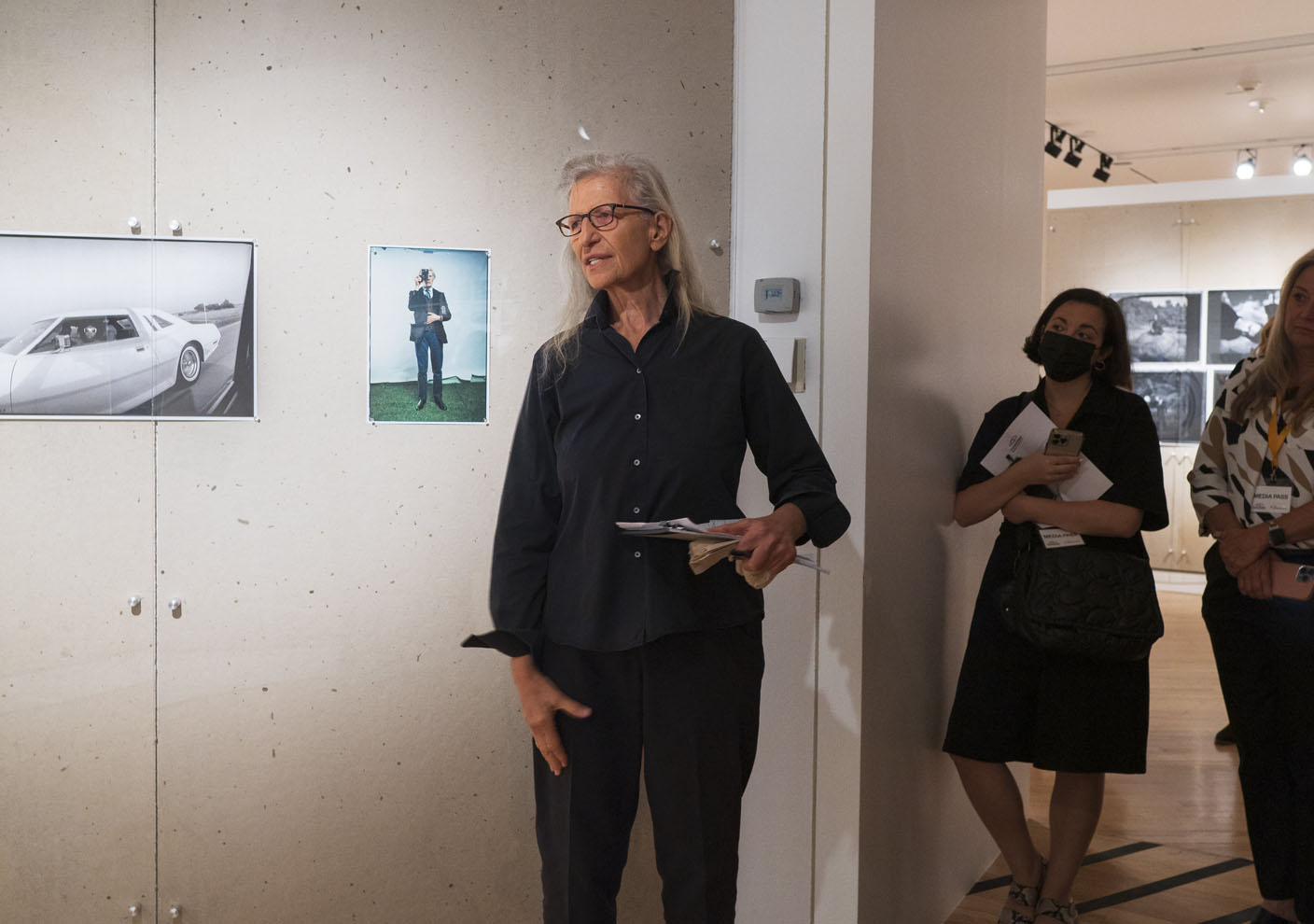 Annie Leibovitzs career began in the 70s, when she was Rolling Stones chief photographer and was caught up in the volatile cultural upheavals of the time. She worked for Vanity Fair and Vogue in the 80s, where she expanded her repertoire of subjects and became established as the portraitist of well-known people. (NWA Democrat-Gazette/Charlie Kaijo)
Annie Leibovitzs career began in the 70s, when she was Rolling Stones chief photographer and was caught up in the volatile cultural upheavals of the time. She worked for Vanity Fair and Vogue in the 80s, where she expanded her repertoire of subjects and became established as the portraitist of well-known people. (NWA Democrat-Gazette/Charlie Kaijo)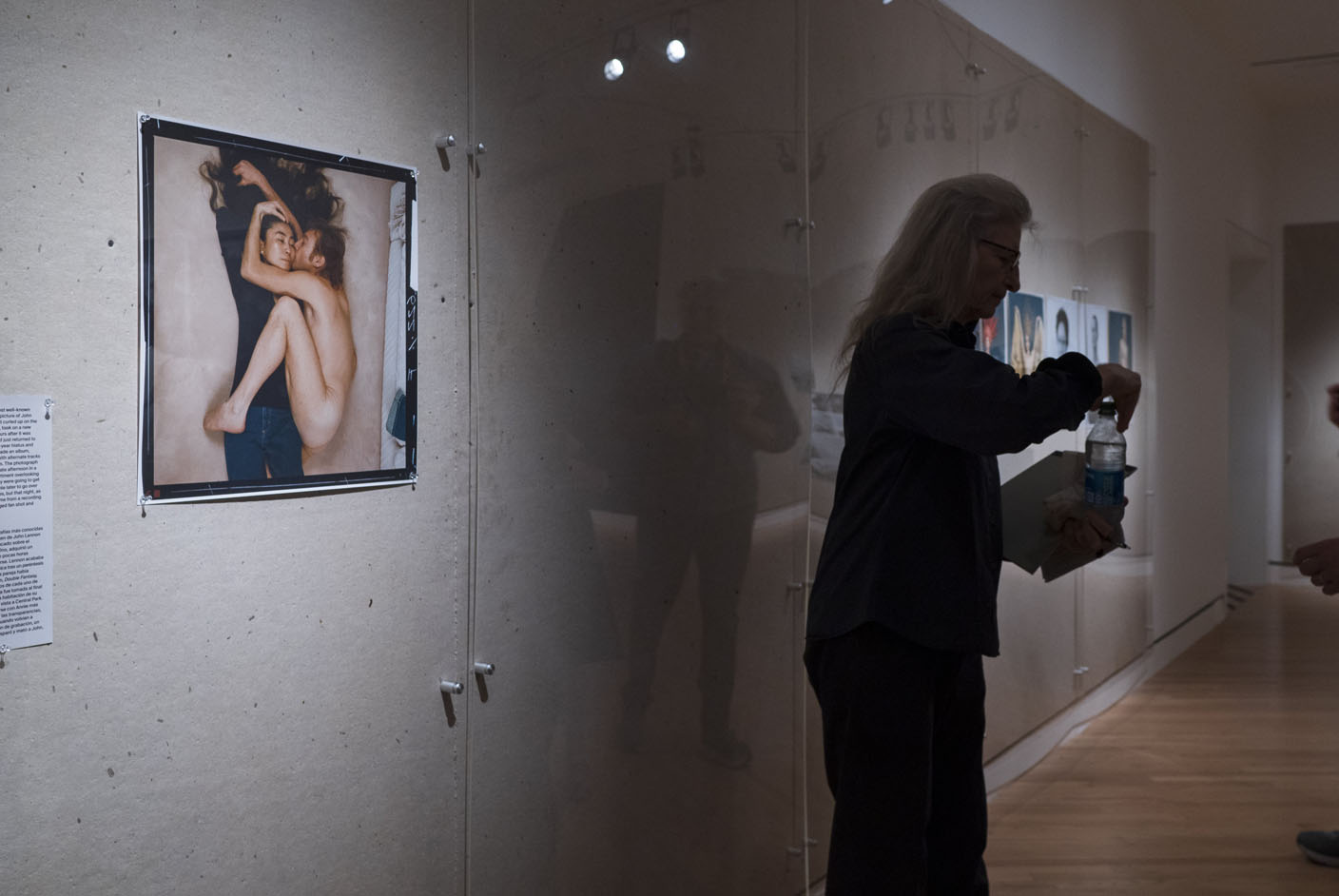 This famous portrait of John Lennon and Yoko Ono was inspired by the image of them kissing on the cover of Double Fantasy, their final album together. Leibovitz had planned for both of them to be unclothed, but Ono changed her mind at the last minute. Annie took the Polaroid and let the couple look at it, to which Lennon said: “Thats our relationship; thats really us.” Several hours later, Lennon died. Leibovitz said photographs have a certain meaning attached when you take them, and that meaning can suddenly change, as it did in this case, based on the circumstances. (NWA Democrat-Gazette/Charlie Kaijo)
This famous portrait of John Lennon and Yoko Ono was inspired by the image of them kissing on the cover of Double Fantasy, their final album together. Leibovitz had planned for both of them to be unclothed, but Ono changed her mind at the last minute. Annie took the Polaroid and let the couple look at it, to which Lennon said: “Thats our relationship; thats really us.” Several hours later, Lennon died. Leibovitz said photographs have a certain meaning attached when you take them, and that meaning can suddenly change, as it did in this case, based on the circumstances. (NWA Democrat-Gazette/Charlie Kaijo)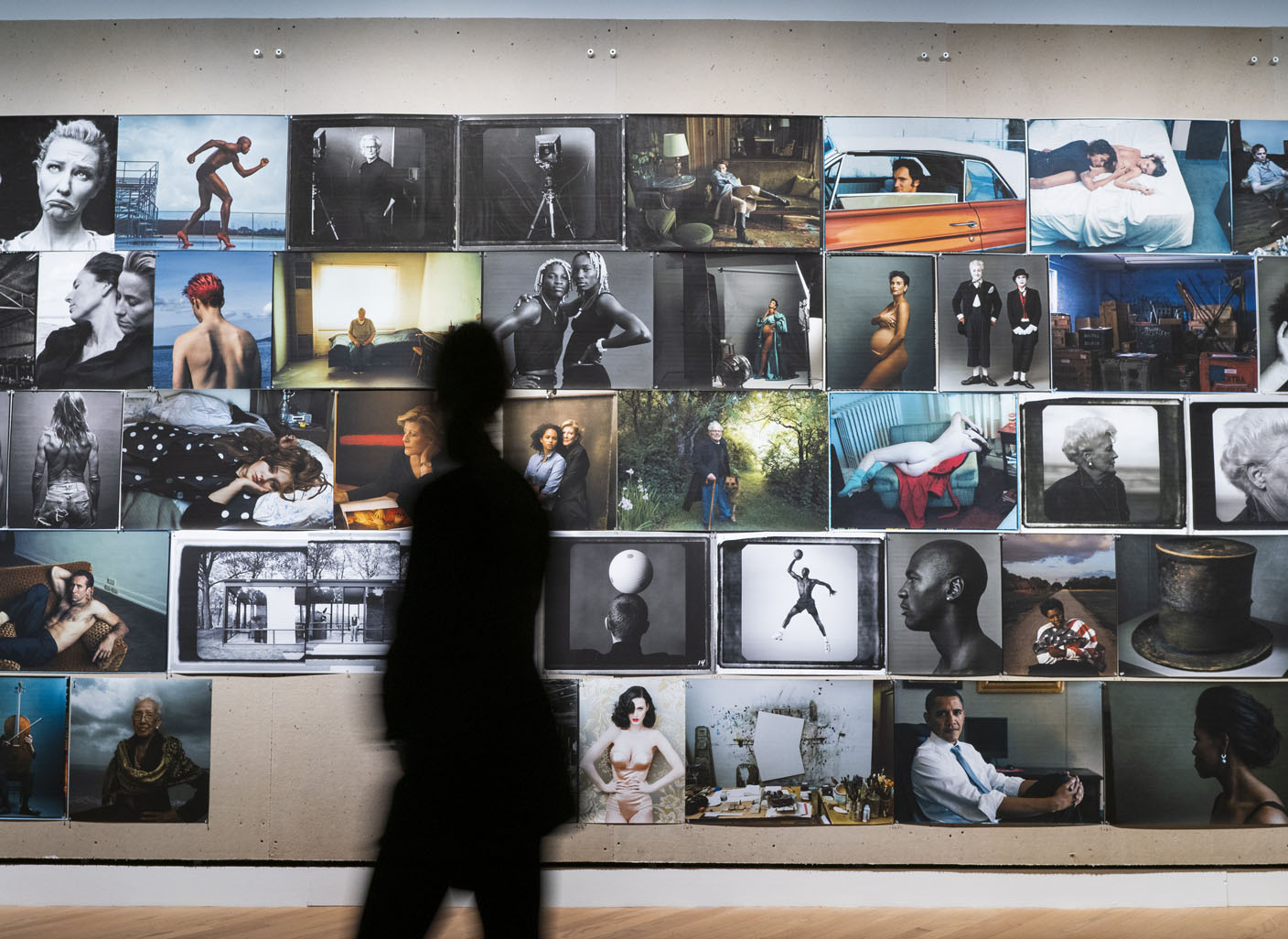 The exhibit “Annie Leibovitz at Work” has new and rarely seen recent photographs, as well as images made over the course of Leibovitzs legendary career of more than five decades. Included are portraits of Cindy Sherman, Lizzo, LeBron James, Presidents Obama and Biden, Gov. Sarah Huckabee Sanders, Rihanna, Dolly Parton, Shonda Rhimes, Tom Ford and Justice Ketanji Brown Jackson, among many others. (NWA Democrat-Gazette/Charlie Kaijo)
The exhibit “Annie Leibovitz at Work” has new and rarely seen recent photographs, as well as images made over the course of Leibovitzs legendary career of more than five decades. Included are portraits of Cindy Sherman, Lizzo, LeBron James, Presidents Obama and Biden, Gov. Sarah Huckabee Sanders, Rihanna, Dolly Parton, Shonda Rhimes, Tom Ford and Justice Ketanji Brown Jackson, among many others. (NWA Democrat-Gazette/Charlie Kaijo)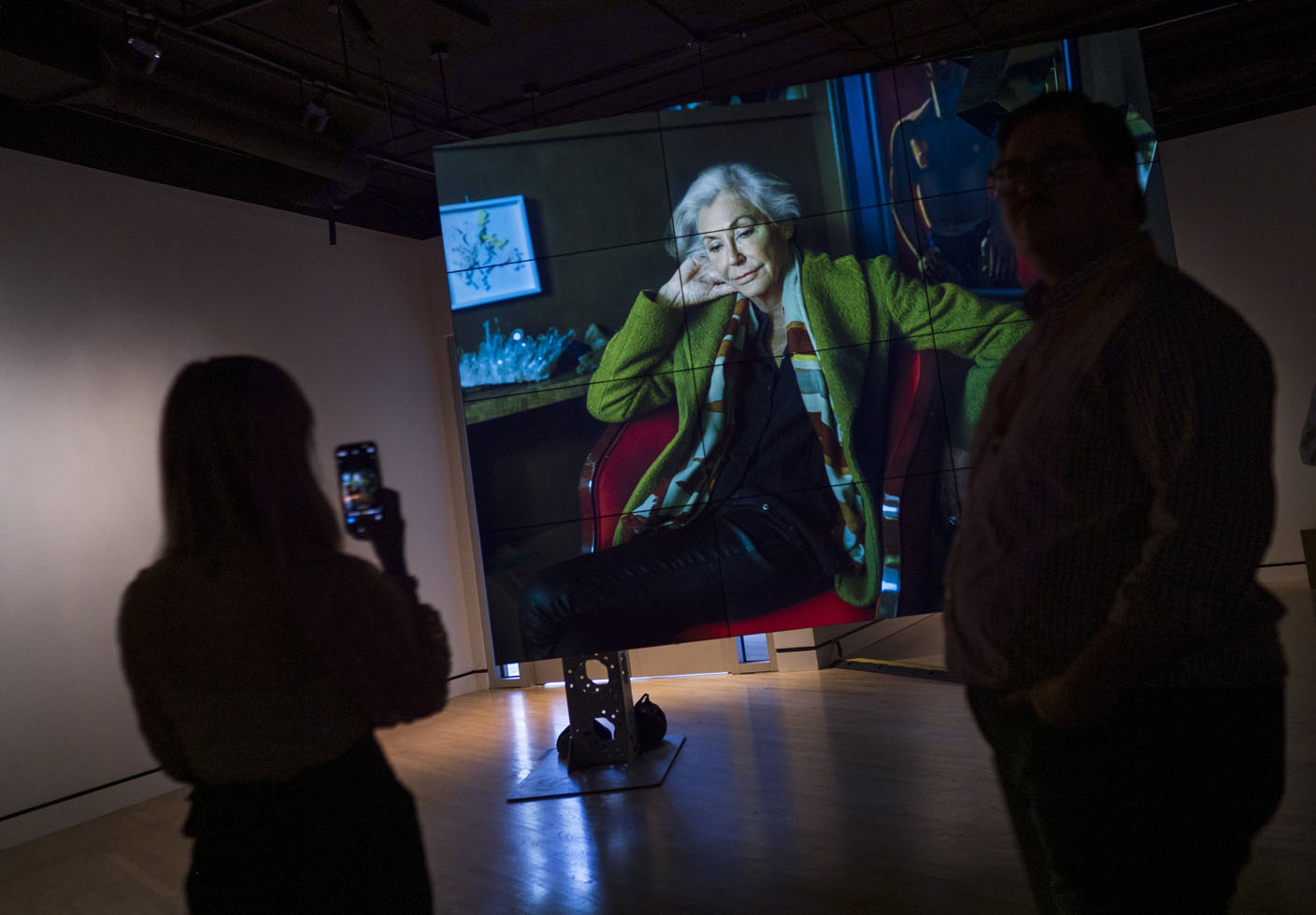 Images of the show are seen in prints on paper and on high-tech digital display screens, such as this portrait of Alice Walton. Leibovitz initially came to the area to photograph Walton and received an invitation to make an exhibition for Crystal Bridges Museum of American Art. (NWA Democrat-Gazette/Charlie Kaijo)
Images of the show are seen in prints on paper and on high-tech digital display screens, such as this portrait of Alice Walton. Leibovitz initially came to the area to photograph Walton and received an invitation to make an exhibition for Crystal Bridges Museum of American Art. (NWA Democrat-Gazette/Charlie Kaijo)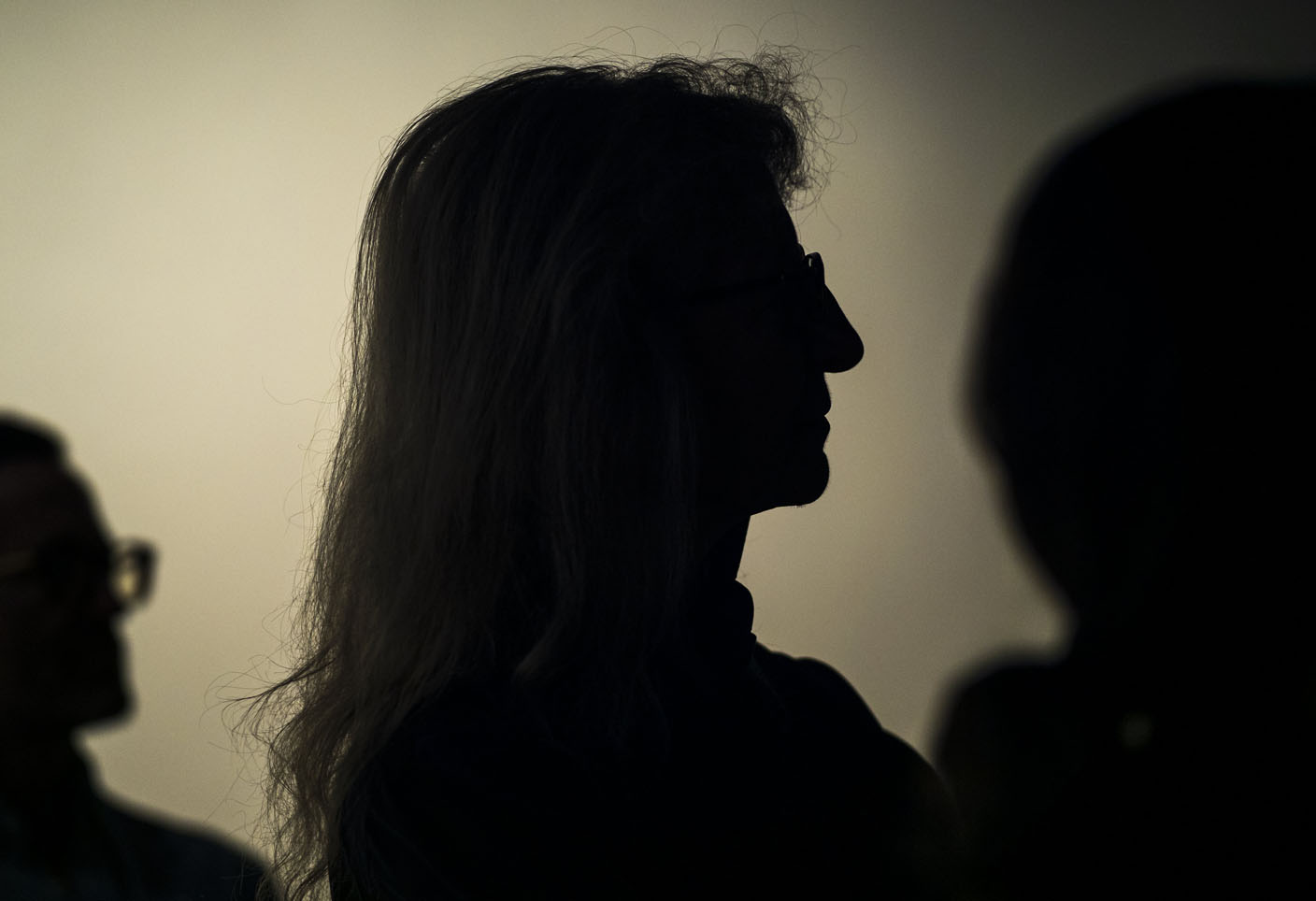 On The Cover: Annie Leibovitz looks on as visitors view her work Sept. 14 during a guided media preview at Crystal Bridges Museum of American Art. (NWA Democrat-Gazette/Charlie Kaijo)
On The Cover: Annie Leibovitz looks on as visitors view her work Sept. 14 during a guided media preview at Crystal Bridges Museum of American Art. (NWA Democrat-Gazette/Charlie Kaijo)[ad_2]
